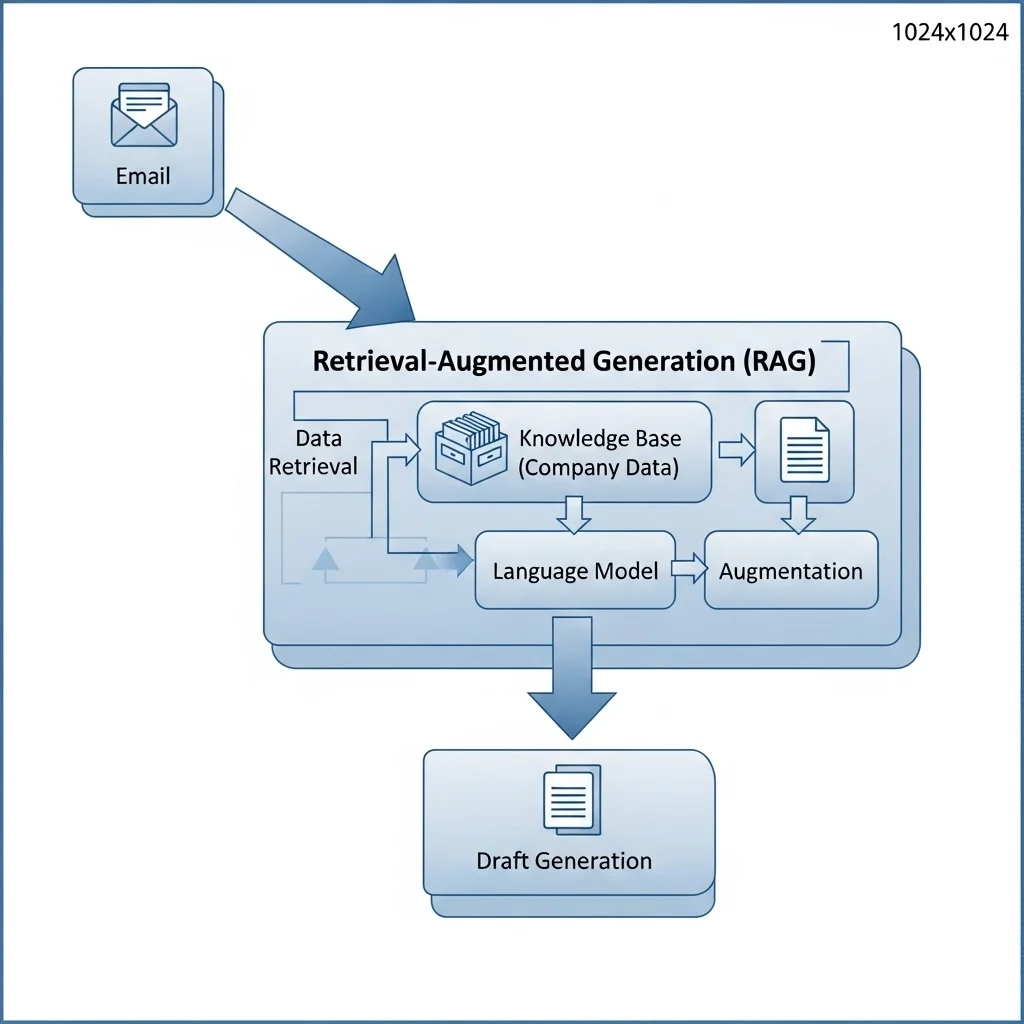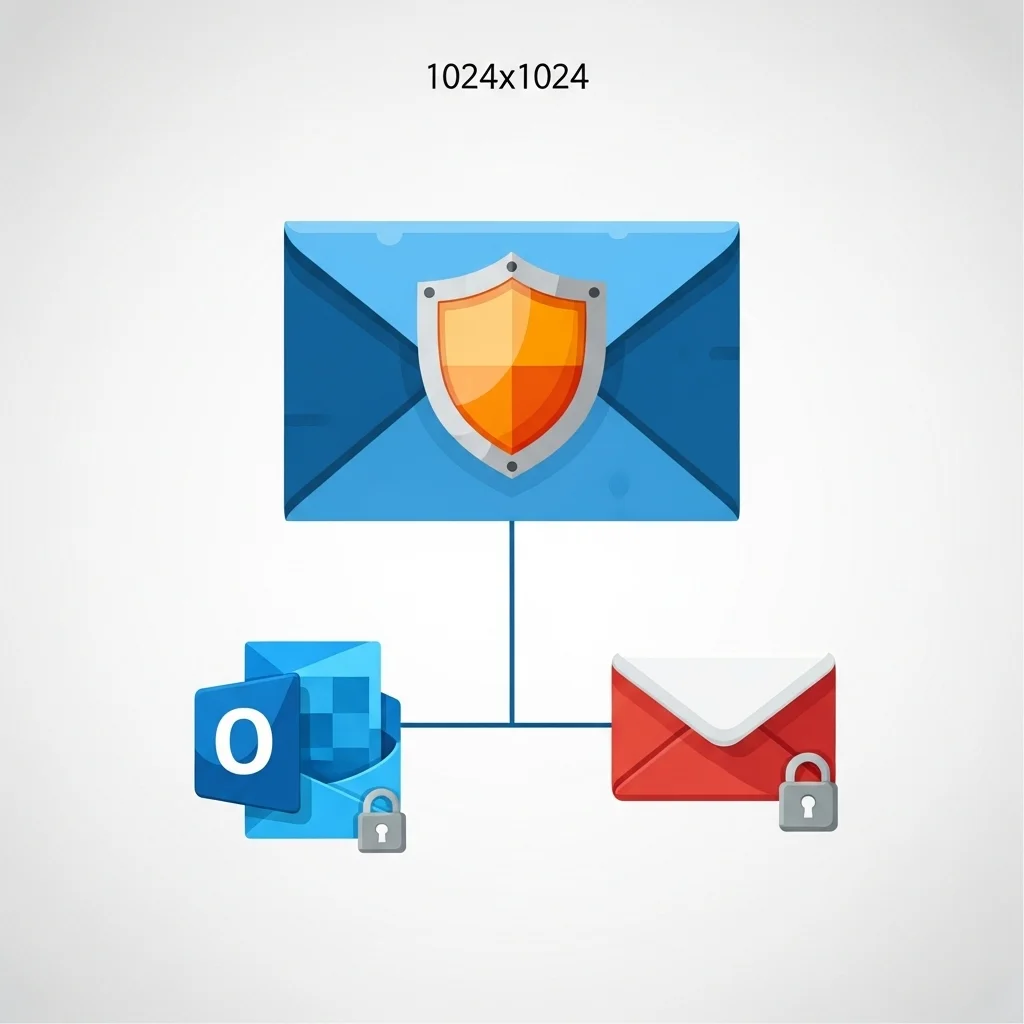We explore how to set up an AI service desk in a single afternoon that effortlessly supports Outlook, Gmail and other mailboxes. Less copy-paste, tighter data security and staff who have time left for real service.
How much time are you still wasting on copy-paste?
Why an AI service desk will no longer be a nice-to-have in 2025
Microsoft is rolling out more Copilot features for Outlook in July '25, and Google Workspace is keeping pace with "Help me write".
Integration APIs let you send email straight from your existing tools to an AI agent.
Training on your own policy documents prevents hallucinated answers and data leaks.
Actionable insights:
Learn how to run a pilot in a single day.
See the pitfalls Spartner spotted when clients experimented with ChatGPT on their own.
Discover five concrete steps to make your help desk email AI-ready.
Slow email is history
Here’s the smart way to do it right now
Data control Connect Outlook or Gmail through OAuth and keep every email internal. No more stray ChatGPT tabs leaking sensitive info.
Context-rich replies The agent reads internal policy docs, product manuals and project wikis. The result: a draft that feels like a new colleague wrote it.
Your call Every email comes back as a draft. The staff member clicks "Send" – or tweaks the tone. Humans stay in control.
Live in no time With our plug-in the basics are up and running in an afternoon. No big-bang migration; test per mailbox or per label.
Step-by-step plan
Inventory your knowledge sources First, we create a folder called "AI-source" in SharePoint or Google Drive. Drop in policies, FAQs and product fact sheets.
Connect the mailbox Use an OAuth connection with Outlook, Gmail or IMAP. Most important: enable only read and draft rights, no direct send permissions.
Define the tone of voice In YAML prompts we specify how friendly, formal or technical the reply should be. Pro tip: provide examples of good emails.
Run a pilot Start with one team member, 100 incoming emails. Measure: time saved, corrections, customer satisfaction.
Scale up in a controlled way Our approach: update the model weekly with fresh feedback and expand the scope per label or category.
Curious how you could test an AI service desk as early as tomorrow? Share your challenges in the comments – I'm listening!
The first step is surprisingly simple
An AI service desk inside Outlook and Gmail
A CTO recently asked me, "Can’t we just open ChatGPT next to the inbox?" In theory, yes – in practice you immediately run into three issues:
Copy-and-paste fatigue Staff lose up to 20% of their time dragging text back and forth. "AI service desk" software removes that friction.
Data security Copying into a public model is not GDPR-proof. Since Microsoft announced a new Copilot DLP module in July '25 – see the Microsoft 365 Copilot update – it’s clear organisations want to keep tracking their data trails.
Lack of context A stand-alone LLM doesn’t know your SLAs, release schedules or lead times. Feeding the agent with internal SharePoint pages makes it respond as if it finished onboarding yesterday.
AI belongs in the flow of work, not in a separate tab. – personal field experience
How do you integrate technically?
Under the bonnet we use two options:
// Simplified pseudocode
$mail = OutlookConnector::fetchUnread();
$draft = AiAgent::replyDraft(
$mail->body,
context: KnowledgeBase::collect($mail->labels)
);
OutlookConnector::saveDraft($mail->id, $draft);
Gmail fans just swap out the connector; everything else stays the same. Thanks to WebHooks the turnaround time averages <2 seconds.
The business case: fewer errors, higher satisfaction
Help desk email AI in numbers
The AI service desk makes the team more consistent. Previously I saw answers vary widely per employee. Now every draft arrives in the same house style, including the right article numbers. Staff add human empathy and done.
You also minimise legal risk. Outlook Copilot’s July update includes "Restrict Copilot processing on emails with sensitivity labels". We do something similar: emails labelled "Payroll" are not processed by the model but go straight to HR.
What I notice in practice
Teams that already have playbooks adopt faster.
Onboarding new colleagues is almost automatic; they learn from the AI prompts.
The biggest pitfall? Forgetting that knowledge ages. Schedule monthly retraining.
Technical deep dive: how do you train safely?
Retrieval-Augmented Generation (RAG) on your own data
We read SharePoint, Confluence and Git repos, vectorise with OpenAI embedding 3-large or open-source alternatives. Queries are enriched in real time.
graph TD
UserMail -->|Prompt| LLM
LLM -->|Retrieve| VectorDB
VectorDB --> Context
Context -->|Augment| LLM
LLM --> Draft
We also optionally run the LLM part on-prem with Ollama or Azure OpenAI Private, keeping data inside EU borders.
Continuous feedback loop
Every time a staff member edits a draft we log the diff plus rating (👍/👎). A nightly job fine-tunes mini-models or adjusts retrieval filters. The interesting part is that precision rises without touching the large foundation model.

Why not send directly?
In our experience a human touch is still indispensable. Humour, nuance or a simple typo can make or break a customer relationship. And yes, legal liability is still yours 😊.
Is this different from Outlook Copilot?
Copilot is powerful, but it focuses on Office apps. Our AI service desk solution centres on your help desk email AI workflows, grounded in your own knowledge base and multi-channel.
What about GDPR?
We process emails within EU data centres and log consent. Sensitive labels block processing. That saves you sleep – and fines.
Which models do you use?
Usually GPT-4o for generation and our own mini-model for sentiment. For on-prem choices we look at Llama-3-70B.
Can I start without developers?
Yes. With our no-code configurator you point to folders, labels and tone of voice. A technical admin is only needed later for fine-tuning.
How do I maintain the knowledge base?
Plan a monthly review. Add release notes and new FAQs; the retrain pipeline takes care of the rest.
What if the model hallucinates?
We always show sources with every answer. Staff approve or improve. Feedback goes straight back into the system.
Do you support other channels like Teams or WhatsApp?
Absolutely. The architecture is channel-agnostic; email is just the first step.
Do you see opportunities – or obstacles – in deploying an AI service desk? Leave your thoughts below; I’ll be happy to respond! 🧑💻


